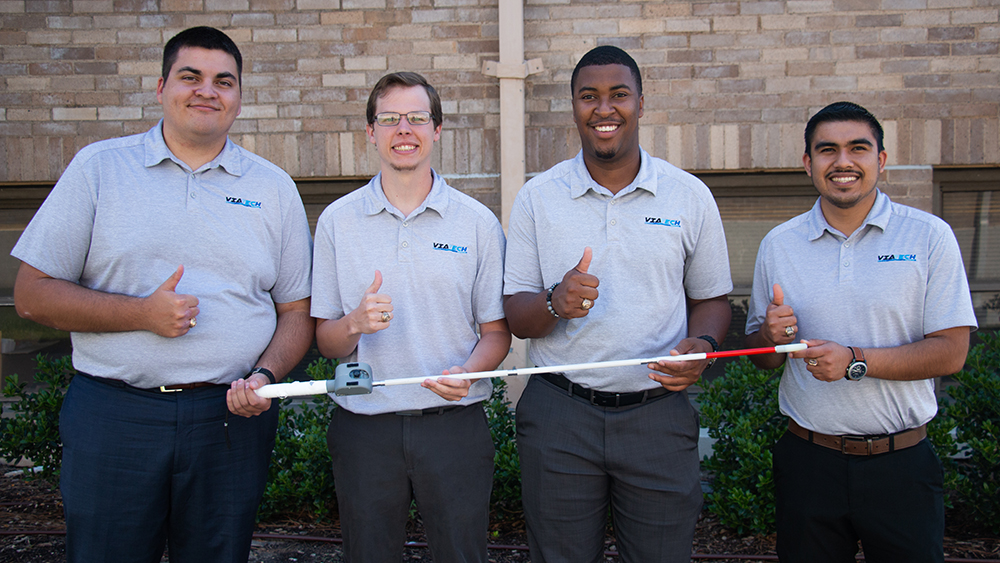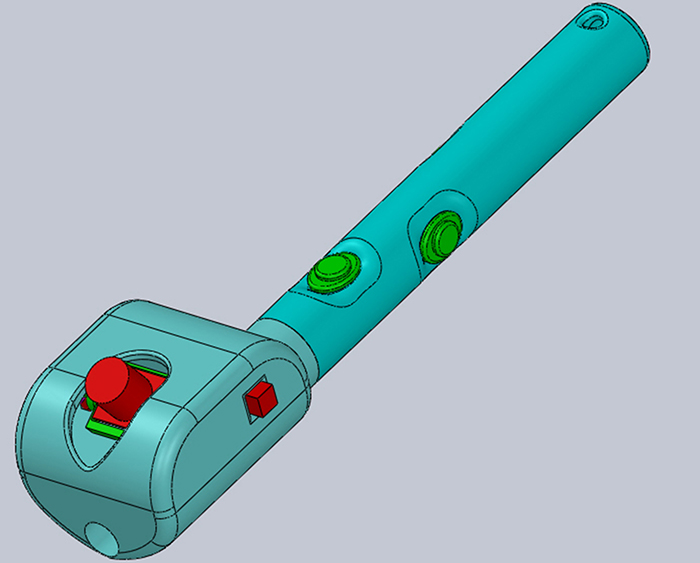
According to the World Health Organization, approximately 253 million people across the globe live with visual impairment, and 36 million are blind.
Since the 1920s, white canes have been used to navigate surroundings and visually notify others of visual impairments.
Four engineering students at Texas A&M University have developed a white cane attachment that can provide object detection and turn-by-turn navigation assistance via haptic feedback.
Their project, the Navigational & Object Visual Assistant (NOVA), uses an ultrasonic sensor and vibration motors to alert white cane users of any obstacles above the waist with specific vibration patterns. The team also created a mobile application that will interact with the NOVA to signal directions to the user (e.g., turn left, or turn right).
Using technology to assist people shows the humanizing impact of engineering on the world today.
Electronic Systems Engineering Technology (ESET) students Garrett Friedrichs, Hunter Schwedler, Brady Langston, Jason Belmares and Lathan Moore have been working together over the past year in a capstone team called VIATECH.
Moore, VIATECH’s project manager, got the idea for the project while working with children with disabilities in the Postsecondary Access and Training in Human Services (PATHS) program from the College of Education & Human Development.
“I asked my students what they would like to see happen in their world because often they are forgotten,” said Moore. “One of my students said ‘we want something cool on our white canes’ and suggested a flashlight. Our group decided to take that a step further and add something even cooler.”

NOVA’s ultrasonic sensor sends out a different voltage based on how far away the object is, then the voltage is read through an analog to digital converter and the vibration intensity fluctuates based upon the values read.
Schwedler, the software engineer for VIATECH, offered insight on why vibration would be useful for the visually impaired. “[NOVA] has no auditory feedback at all, which is a big thing that the visually impaired students stressed that they wanted," he explained. "They need to closely listen to their surroundings, and any sort of unnecessary sound can be distracting.”
By having the left and right motor for navigation and the center motor attached to the ultrasonic sensor, a user will be able to feel the difference between navigational and obstacle detection vibrations.
Dr. Ana Goulart, associate professor in the Department of Engineering Technology and Industrial Distribution and ESET program coordinator, served as the faculty advisor for the project.
“We have the potential to help people with disabilities, and this project could spur more research into this area in the future,” said Goulart. “Using technology to assist people shows the humanizing impact of engineering on the world today.”